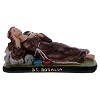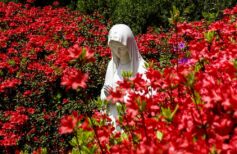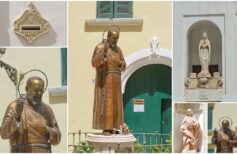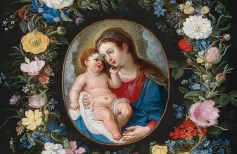The rose is the flower par excellence dear to Our Lady, but also other saints have a flower that represents them. Let’s discover together the scent of the saints.
Contents
- 1 The month of May month of Our Lady
- 2 The lily, the flower of Santa Caterina
- 3 Spikenard, the flower of St. Joseph
- 4 The lily, the flower of Saint Anthony
- 5 The Hypericum, the Flower of St. John
- 6 All the flowers of Saint Teresa
- 7 The Rose of Saint Rita
- 8 Lilies and roses, the flowers of Santa Rosalia
The month of May is one of the months dedicated to Our Lady. It is also the month of roses, which in this period witness their most luxuriant flowering, and the association is certainly not accidental. Once there was the tradition of adorning the statues of the Virgin with garlands of flowers, especially roses, and this is where the devotional form that we all know: the Rosary comes from. Always from the close bond between Mary and the rose, and flowers in general, the practice of Fioretti is born.
But there are other flowers that for different reasons have been associated over time with Our Lady and the saints. For this reason, it does not seem improper to talk about the perfume of the saints, on the contrary, we want to analyse in this article which flowers are associated with the different saints because very often we see statues of saints adorned with specific flowers.

The Madonna del Roseto represented by various artists
Here are the most famous works depicting the Madonna del Roseto and the meaning….
The month of May month of Our Lady
May is therefore the month consecrated to the Virgin Mary. The tradition that associates Our Lady with May has no basis in the Holy Scriptures. It has taken hold and developed over the centuries. Throughout the month some special prayers and devotions can be addressed to her every day, to obtain grace or just to embark on a path of personal spiritual growth. The reasons that make May the Marian month par excellence is rooted in pre-Christian traditions, in ancient pagan cults dedicated to gods linked to fertility, fertility and the return to life. In fact, since ancient times it was at this time of the year that the rebirth of nature was celebrated after the long winter.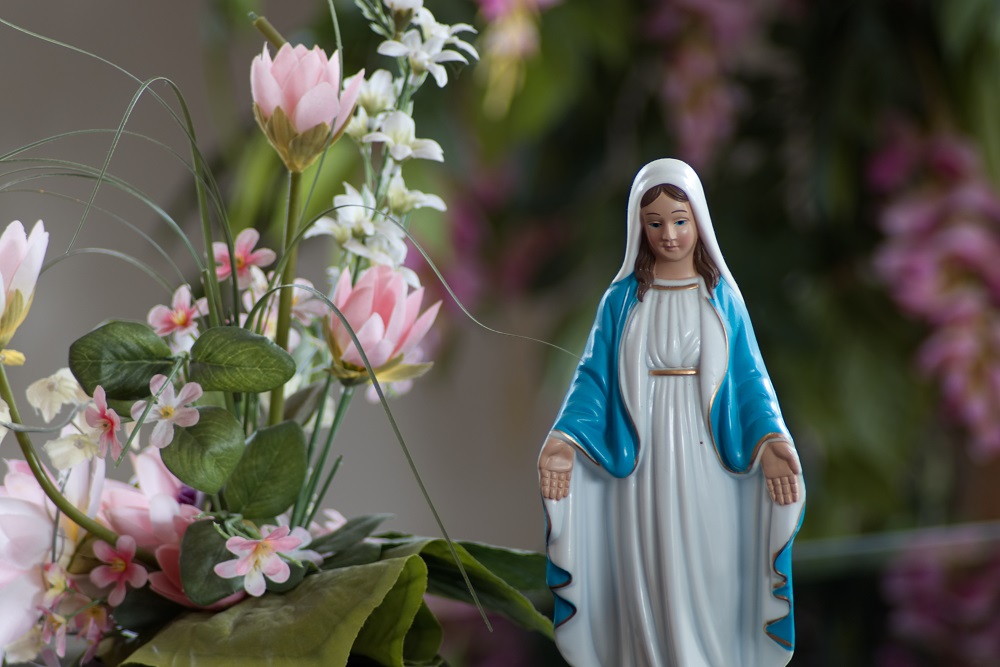
The association of Mary with roses comes from the Middle Ages when Mary began to be celebrated as: “Rose of roses, flower of flowers, woman among women, only lady, the light of the saints and the heavens away.”Also in the Middle Ages, the tradition of the Rosary was born, as a devotional object par excellence dedicated to Mary. The origin of the Rosary is to be found in the custom of adorning the statues of Our Lady with garlands of flowers, especially roses, in May. As for the Fioretti, instead, we have to wait for the sixteenth century, when St. Philip Neri invited the children placed in his custody to decorate with flowers the image of Mary and sing his praises, and later to Don Bosco, who asked his boys to replace the flowers for Our Lady with good deeds, small sacrifices, commitments also linked to daily life. The Fioretto alla Madonna as a flower to offer.
The Madonna is also considered the mystical rose, the most beautiful flower, which symbolises the grace of God, the queen of all flowers and yet “mystical”, hidden, as hidden for us is his body, ascended to Heaven at his death.
Another flower often associated with the Madonna is the white lily, a symbol of purity.

The lily, the flower of Santa Caterina
In the traditional iconography of Saint Catherine of Siena, Patroness of Italy and Patroness of Europe, a book, a symbol of the doctrine, the ring, which symbolises the mystical wedding between her and Jesus, and a lily, a symbol of purity, are represented. In other representations, white flowers gush from his stigmata, while on his head is placed a crown of thorns.
Spikenard, the flower of St. Joseph
We have already explored in a previous article the reasons why the spikenard flower is associated with St. Joseph, the putative father of Jesus. It also appears in the coat of arms of Pope Francis. The association of Saint Joseph with the spikenard is typical of Hispanic San Giuseppe countries, where the saint is often depicted with a twig of spikenard in hand. A fragrant oil considered of great value since ancient times is obtained from the spikenard used as incense: spikenard oil. St. Joseph is also often depicted with a stick from which lilies bloom, a symbol of the Virgin’s purity.

The lily, the flower of Saint Anthony
Saint Anthony of Padua is also often depicted with white lilies, which, according to his Sermones, represented penitents: “Consider that in the lily there are three properties: medicine, whiteness and perfume. The drug is found in its root, the whiteness and scent of the flower. And these three properties represent the penitents, poor in spirit, who crucify the members with their vices and their lusts, who guard humility in the heart to suffocate the impudence of pride, the candour of chastity in the body and the perfume of good fame.” (Sermons, Fifteenth Sunday after Pentecost, 12)
The Hypericum, the Flower of St. John
Hypericum, or St. John‘s wort, is a herbaceous plant widespread throughout Italy. Since it blooms mainly between June and August it has been associated with the feast dedicated to St. John, which falls on 24 June. If the yellow flowers of the Hypericum are harvested tonight, they will have miraculous power both to fight disease and to drive away evil spirits. Today, hypericum is used in herbal medicine to treat depression, anxiety and fatigue.
All the flowers of Saint Teresa
Sieboldii Sedum is known as St. Teresa’s Grass or “Teresina”. It blooms in October, the month dedicated to Saint Teresa of the Child Jesus (Teresa of Lisieux) and Saint Teresa of Avila. Native to Japan, it is a fatty plant that does not require great care.
But Saint Teresa of Lisieux is also associated with roses and pratinas. Particularly in these last, humble and delicate flowers, she recognized herself very much, as we read in her memoirs: “As the sun illuminates at the same time the cedars and every flower as if this were only on earth, so Our Lord cares individually for each soul… so that the humblest pratine blossoms in the established time” (History of a Soul).
On the point of death, St. Teresa announced: “You will see at the moment of my death that cascade of roses I will rain on the earth.” For this reason, in iconography the Saint is often represented with hands full of roses, which symbolise the graces she dispensed during her life and even after her death. From this story also comes the novena of roses inspired by her. A Jesuit named Father Putigan began to recite a novena to invoke an important grace and asked God as a sign of benevolence and guarantee, a rose. For every day and every grace he kept asking for roses and got them.
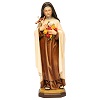
The Rose of Saint Rita
Saint Rita of Cascia is also known as the Saint of the “Rose”. Like St. Catherine, she is often depicted with a ring and a rose. The rose in particular is one of its symbols par excellence. Now on the verge of death and bedridden, the Saint asked that two figs and a rose be brought to her from the garden of the house where she had grown up, although it was late winter. The cousin who also tried to support her went to the garden and in the middle of the snow, she found a rose and two figs. The rose also symbolises the life of Saint Rita, who grew up among the thorns without losing her perfume, her good heart and her faith.
Lilies and roses, the flowers of Santa Rosalia
Santa Rosalia, patron saint of Palermo, is often depicted adorned with crowns of lilies and roses, flowers that represent respectively virginity and union with God. Sometimes it is the Child Jesus who places the wreath of flowers on the head of the Holy Virgin, in a sort of mystical marriage. Its name includes the name of both flowers. Legend has it that before her birth, a mysterious figure appeared to her parents who told them that the child she would be born with would be “a rose without thorns.” Hence the name was chosen for her, Rosalia, which combines the Latin terms rosa and Lilium, “pink” and “lily”.
